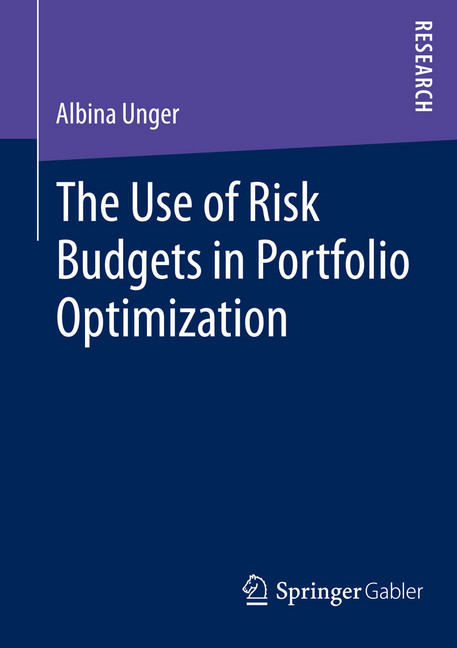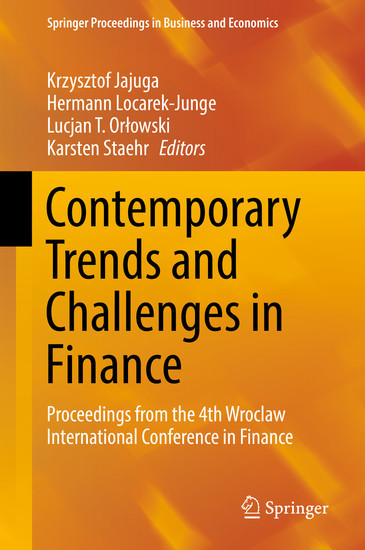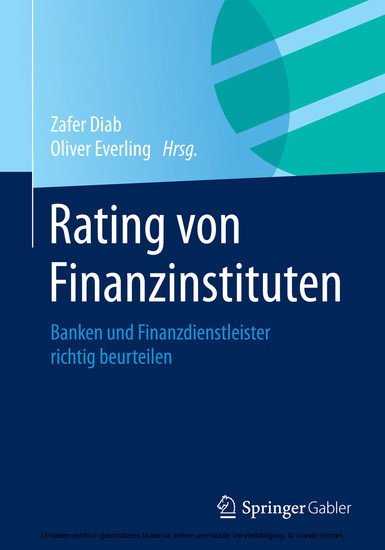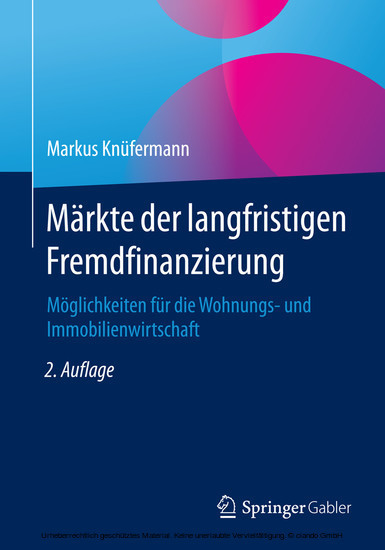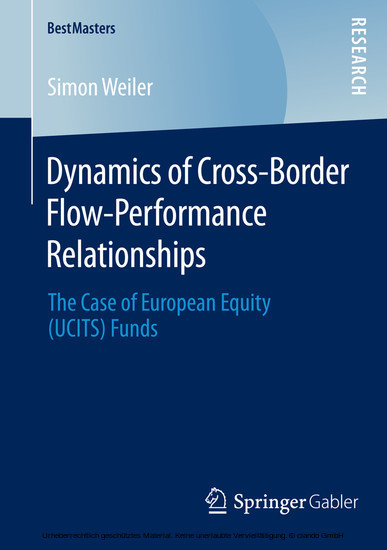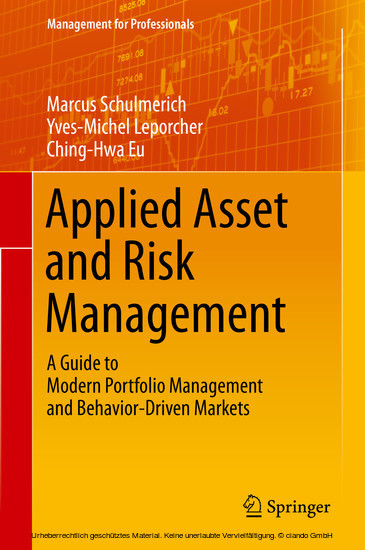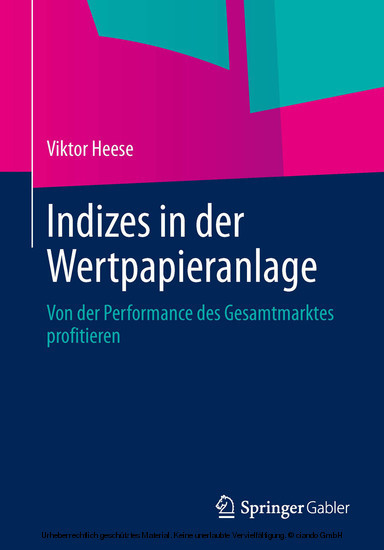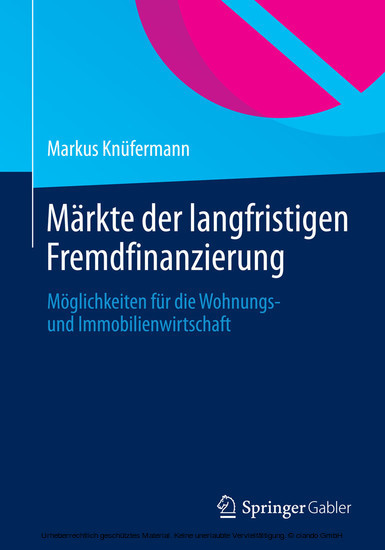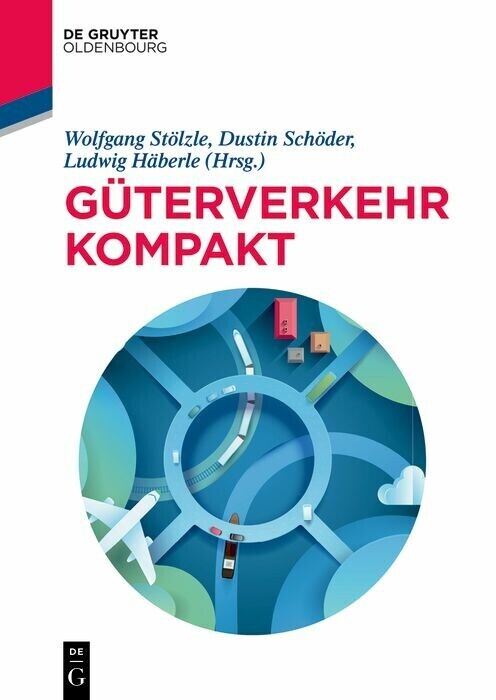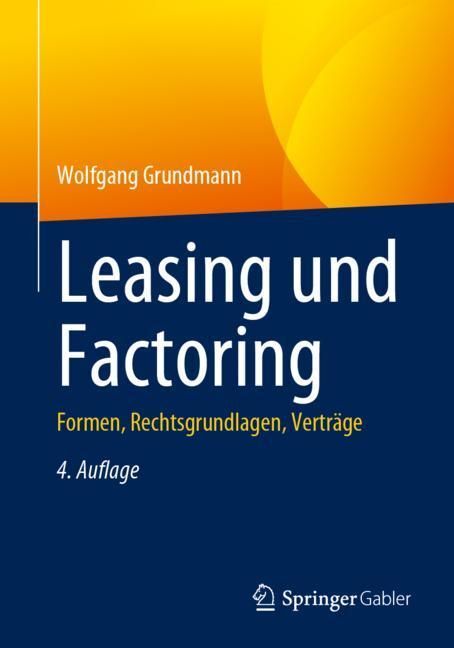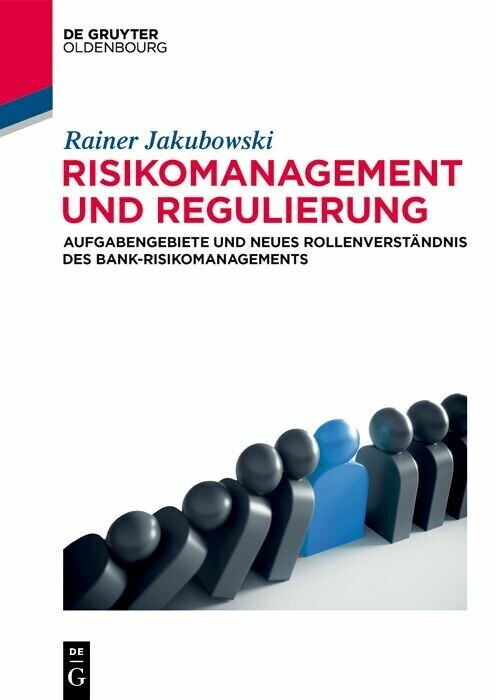The Use of Risk Budgets in Portfolio Optimization
Risk budgeting models set risk diversification as objective in portfolio allocation and are mainly promoted from the asset management industry. Albina Unger examines the portfolios based on different risk measures in several aspects from the academic perspective (Utility, Performance, Risk, Different Market Phases, Robustness, and Factor Exposures) to investigate the use of these models for asset allocation. Beside the risk budgeting models, alternatives of risk-based investment styles are also presented and examined. The results show that equalizing the risk across the assets does not prevent losses, especially in crisis periods and the performance can mainly be explained by exposures to known asset pricing factors. Thus, the advantages of these approaches compared to known minimum risk portfolios are doubtful.
Albina Unger holds a doctoral degree from the Faculty of Finance at the University of Bremen, Germany. She now works as a risk manager.
Albina Unger holds a doctoral degree from the Faculty of Finance at the University of Bremen, Germany. She now works as a risk manager.
1;Foreword;5 2;Preface;7 3;Contents;9 4;List of Figures;12 5;List of Tables;14 6;1 Introduction;24 6.1;1.1 Motivation and Problem Statement;24 6.2;1.2 Outline of Thesis;30 7;2 Theoretical Background;33 7.1;2.1 Modern Portfolio Theory;33 7.1.1;2.1.1 Mean Variance Framework;33 7.1.2;2.1.2 Separation Theorem;43 7.1.3;2.1.3 Utility Theoretic Foundation;46 7.1.4;2.1.4 Weaknesses of the Classical Portfolio Theory;56 7.2;2.2 Asset Pricing Theory;58 7.2.1;2.2.1 Capital Asset Pricing Model - CAPM;58 7.2.2;2.2.2 Empirical Evidence - Critique and Anomalies;63 7.2.3;2.2.3 Factor Models;66 7.2.4;2.2.4 Methodology for Empirical Testing;69 7.3;2.3 Summary;73 8;3 Alternative Approaches in Portfolio Management;75 8.1;3.1 Risk Measures and Risk Contributions;75 8.1.1;3.1.1 What Is Risk?;75 8.1.2;3.1.2 Risk Measures;77 8.1.3;3.1.3 Risk Contributions;85 8.2;3.2 Portfolio Models;96 8.2.1;3.2.1 Equally Weighted Portfolio (1/n);96 8.2.2;3.2.2 Minimum Risk Portfolios;97 8.2.3;3.2.3 Equally Risk Contribution Portfolios;99 8.3;3.3 Utility Theoretic Foundations;102 8.3.1;3.3.1 Expected Utility Theory;102 8.3.2;3.3.2 Other Approaches;107 8.3.3;3.3.3 Summary;127 9;4 Literature Review;129 9.1;4.1 Minimum Risk Portfolios;129 9.1.1;4.1.1 MV/Low Risk Anomaly;129 9.1.2;4.1.2 Minimum-CVaR Portfolio;141 9.1.3;4.1.3 Maximum Drawdown and Drawdown Measures;145 9.1.4;4.1.4 Minimum-CDaR Portfolio;148 9.2;4.2 Risk Budgeting Portfolios;150 9.2.1;4.2.1 Volatility Risk Budgets;150 9.2.2;4.2.2 CVaR Risk Budgets;159 9.2.3;4.2.3 Summary of the Risk Budgeting Studies;162 10;5 Robustness;168 10.1;5.1 Definition of Robustness;168 10.2;5.2 Approaches to Robust Portfolios: A Short Review;170 10.3;5.3 Review of the Robustness of the Markowitz Approach;173 10.4;5.4 Robustness of the Volatility Risk Budgeting Portfolio;176 10.5;5.5 Summary;179 11;6 Empirical Studies;180 11.1;6.1 Organization of Studies;180 11.2;6.2 Performance Study;182 11.2.1;6.2.1 Methodology;183 11.2.2;6.2.2 European Fund;194 11.2.3;6.2.3 Global Portfolio;213 11.2.4;6.2.4 German Market;236 11.2.5;6.2.5 Summary of the Performance Studies;261 11.3;6.3 Exploring Risk-Based Pricing Anomalies;262 11.3.1;6.3.1 Methodology;263 11.3.2;6.3.2 Global Portfolio;267 11.3.3;6.3.3 Germany 1973;271 11.3.4;6.3.4 Rolling Regressions;278 11.3.5;6.3.5 US Industry Indices;283 11.3.6;6.3.6 US MSCI;285 11.3.7;6.3.7 German Industry Indices;287 11.3.8;6.3.8 German MSCI;291 11.3.9;6.3.9 Four-Factor Model;295 11.3.10;6.3.10 Summary of the Factor Regressions;296 11.4;6.4 Robustness Study;297 11.4.1;6.4.1 Methodology;298 11.4.2;6.4.2 Simulation Study;301 11.4.3;6.4.3 Empirical Study;325 11.4.4;6.4.4 Results of the Robustness Study;339 12;7 Extensions of Empirical Studies;342 12.1;7.1 Fat Tailed Distributions;342 12.2;7.2 Binary Stability Portfolio;356 12.3;7.3 Hierarchical Clustering;369 12.3.1;7.3.1 Global Portfolio;373 12.3.2;7.3.2 German Market;376 12.3.3;7.3.3 Different Clustering Algorithm;380 12.3.4;7.3.4 Summary;382 13;8 Conclusion;384 14;A Appendix;391 14.1;A.1 Germany1973 Dataset;391 14.2;A.2 Regressions;392 14.2.1;A.2.1 Global Dataset;392 14.2.2;A.2.2 Germany 1973 Dataset;397 14.2.3;A.2.3 US Industry Dataset;403 14.2.4;A.2.4 US MSCI Dataset;404 14.2.5;A.2.5 German Industry Dataset;405 14.2.6;A.2.6 German MSCI Dataset;407 14.3;A.3 Robustness Study;408 15;Bibliography;410
Unger, Albina
| ISBN | 9783658072599 |
|---|---|
| Artikelnummer | 9783658072599 |
| Medientyp | E-Book - PDF |
| Auflage | 2. Aufl. |
| Copyrightjahr | 2014 |
| Verlag | Springer Gabler |
| Umfang | 443 Seiten |
| Sprache | Englisch |
| Kopierschutz | Digitales Wasserzeichen |

